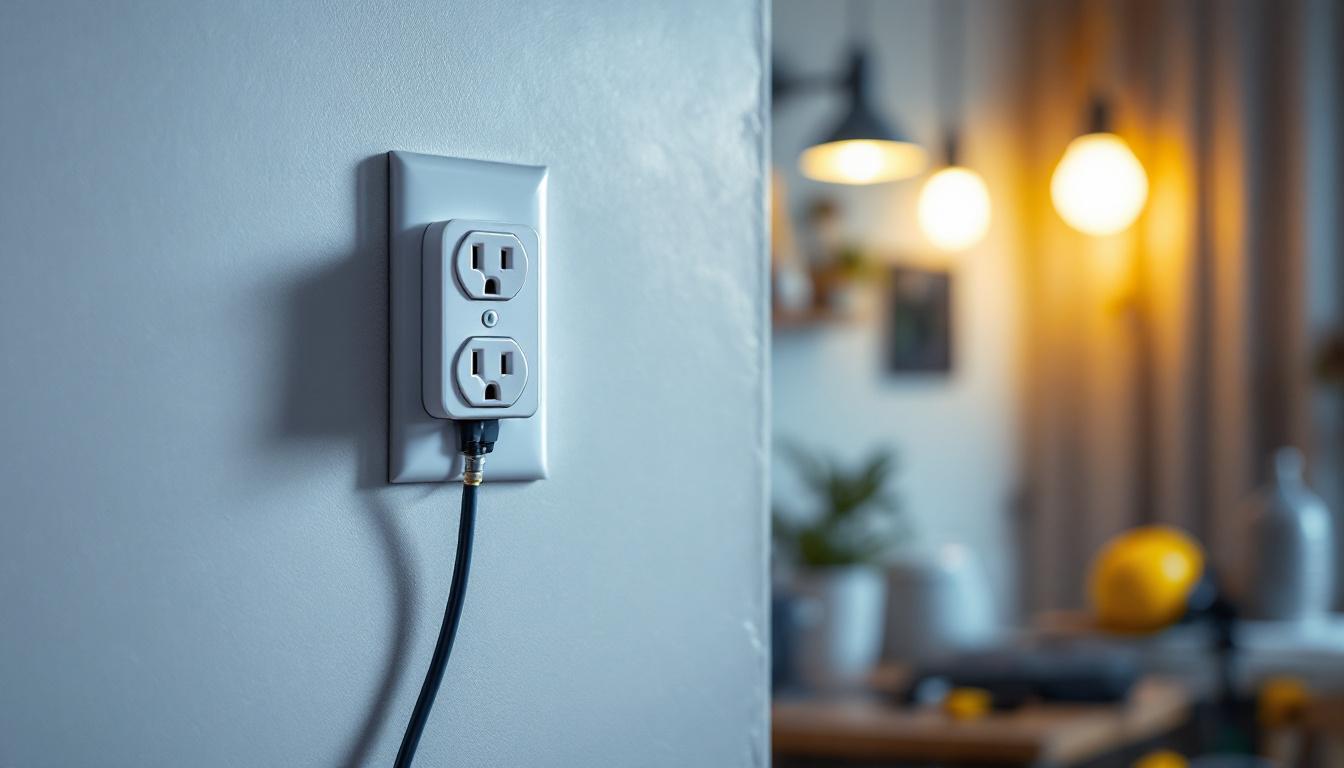
As a lighting contractor, understanding the various components of electrical installations is crucial for ensuring safety and functionality. One such component that often comes into play is the 4 way outlet. This guide aims to provide a comprehensive overview of 4 way outlets, their applications, installation procedures, and best practices to help lighting contractors enhance their skills and service quality.
A 4 way outlet is designed to provide multiple access points for electrical devices, allowing for greater flexibility in lighting arrangements. Unlike standard outlets, which typically offer only two or three receptacles, a 4 way outlet can accommodate four devices simultaneously. This feature is particularly beneficial in spaces where multiple lighting fixtures or appliances need to be connected. In addition to enhancing convenience, these outlets can help reduce clutter by minimizing the need for power strips and extension cords, creating a more organized and aesthetically pleasing environment.
One of the defining characteristics of a 4 way outlet is its ability to distribute power effectively across multiple devices. This is achieved through a complex wiring system that ensures each outlet receives an adequate supply of electricity without overloading the circuit. Additionally, 4 way outlets often come with built-in safety features, such as surge protection and circuit breakers, to prevent electrical hazards. Some models even include smart technology, allowing users to control connected devices remotely via smartphone apps or voice commands, further enhancing the functionality of the outlet.
4 way outlets are commonly used in residential, commercial, and industrial settings. In homes, they are ideal for living rooms, kitchens, and home offices where multiple devices are frequently used. For instance, a 4 way outlet in a kitchen can power a coffee maker, toaster, microwave, and blender all at once, making meal preparation more efficient. In commercial spaces, such as offices and retail stores, these outlets facilitate the connection of various lighting fixtures, computers, and other electronic equipment. This is particularly useful in collaborative workspaces where multiple employees may need to plug in laptops and chargers simultaneously. Industrial settings benefit from 4 way outlets as well, particularly in workshops and manufacturing facilities where heavy machinery requires reliable power sources. Here, the ability to connect multiple tools and equipment can significantly enhance productivity and streamline operations, ensuring that workers have the power they need right at their fingertips.
Installing a 4 way outlet requires a solid understanding of electrical systems and adherence to safety regulations. Lighting contractors must follow a systematic approach to ensure a successful installation. Below are the key steps involved in the installation process.
Before beginning the installation, it is essential to assess the site and determine the best location for the 4 way outlet. Factors to consider include the proximity to existing electrical circuits, the layout of the space, and the anticipated load on the outlet. Proper planning also involves gathering the necessary tools and materials, such as wire, connectors, and the outlet itself. It is also advisable to review the electrical plans of the building, if available, to understand the existing wiring layout and any potential challenges that may arise during installation. This foresight can help in identifying the most efficient path for running new wires and in avoiding any unforeseen complications.
The wiring process for a 4 way outlet can be complex, especially when integrating it into an existing electrical system. Typically, a 4 way outlet will require a combination of three-way switches and additional wiring to connect the various outlets. It is crucial to follow the manufacturer’s instructions and local electrical codes to ensure a safe and compliant installation. During this phase, it is also important to consider the type of circuit breaker that will be used. A dedicated circuit may be necessary depending on the load requirements, and ensuring that the circuit breaker is rated appropriately can prevent overloads and enhance safety.
When wiring, make sure to use the appropriate gauge wire for the expected load. A common mistake is using wire that is too thin, which can lead to overheating and potential fire hazards. Additionally, ensure all connections are secure and properly insulated to prevent short circuits. Labeling wires during this process can also be beneficial, especially in complex installations, as it simplifies troubleshooting and future modifications. Using color-coded wires can help differentiate between the various connections, making the installation cleaner and easier to manage.
Once the wiring is complete, testing the outlet is essential to ensure it functions correctly. Use a multimeter to check for proper voltage and continuity. After confirming that everything is in order, securely mount the outlet in its designated location and attach the cover plate. Finally, conduct a thorough inspection of the installation to ensure compliance with safety standards. It is also recommended to perform a load test by plugging in devices to ensure that the outlet can handle the intended load without tripping the circuit. This step is crucial for identifying any potential issues before the installation is deemed complete, providing peace of mind that the outlet will perform reliably under normal operating conditions.
To excel in the installation of 4 way outlets, lighting contractors should adhere to several best practices. These practices not only enhance safety but also improve the overall quality of work.
Electrical codes and regulations are constantly evolving. It is vital for lighting contractors to stay informed about the latest changes in local and national electrical codes. Regular training and certification can help ensure compliance and enhance the contractor’s credibility in the industry. Additionally, subscribing to industry publications and participating in professional organizations can provide valuable insights into emerging trends and technologies, enabling contractors to adapt their practices accordingly.
Using high-quality materials is essential for the longevity and reliability of electrical installations. When selecting 4 way outlets, opt for reputable brands that offer warranties and have a proven track record. Quality materials not only reduce the risk of failure but also enhance customer satisfaction. Furthermore, it’s important to consider the environmental impact of the materials used. Choosing energy-efficient products can not only lower utility bills for clients but also contribute to a more sustainable future, which is increasingly becoming a priority for many homeowners.
Part of being a successful lighting contractor involves educating clients about their electrical systems. Take the time to explain the benefits of 4 way outlets and how they can improve the functionality of their spaces. Providing clients with information on proper usage and maintenance can also foster trust and lead to repeat business. Moreover, offering workshops or informational sessions can empower clients with knowledge about energy-saving practices and the latest advancements in lighting technology. This proactive approach not only positions the contractor as an expert but also encourages clients to make informed decisions regarding their electrical needs.
While installing 4 way outlets can be straightforward, several challenges may arise during the process. Being aware of these challenges can help contractors prepare and respond effectively.
One of the primary challenges in installing 4 way outlets is dealing with complex wiring configurations. Unlike standard outlets, 4 way outlets often require additional wiring and connections, which can be daunting for inexperienced contractors. It is crucial to have a solid understanding of electrical principles and wiring diagrams to navigate these complexities successfully. Moreover, the presence of multiple switches and circuits can lead to confusion, especially if previous installations were not documented properly. This makes it essential for contractors to meticulously trace existing wiring paths and verify connections before proceeding, as overlooking a single wire can result in malfunctioning outlets or, worse, electrical hazards.
In some cases, space limitations can hinder the installation of 4 way outlets. Tight spaces may restrict access to existing wiring or make it difficult to mount the outlet securely. Contractors may need to employ creative solutions, such as using surface-mounted raceways or relocating outlets to accommodate the installation. Additionally, the physical dimensions of the 4 way outlet itself can pose challenges; larger or bulkier models may not fit comfortably in standard electrical boxes, necessitating modifications or the use of specialized boxes. This can lead to increased labor time and costs, which should be communicated to clients upfront to avoid surprises later on.
Managing client expectations is another challenge that lighting contractors often face. Clients may have specific visions for their lighting setups, which may not always align with practical or safety considerations. Effective communication is key to ensuring that clients understand the limitations and possibilities of their electrical systems. Furthermore, educating clients about the benefits of 4 way outlets—such as improved control over lighting from multiple locations—can help bridge the gap between their desires and the technical realities. Contractors should also be prepared to offer alternatives or compromises that can satisfy both aesthetic preferences and functional requirements, ensuring a smoother installation process and a more satisfied client.
Another significant challenge in the installation of 4 way outlets involves adhering to local electrical codes and regulations. Each region may have specific requirements regarding wiring methods, outlet placement, and safety standards that must be followed to avoid penalties and ensure safety. Contractors must stay updated on these regulations and ensure that their work complies with them, which can sometimes involve additional inspections or permits. This not only adds to the workload but also requires a thorough understanding of the legal implications of electrical work, emphasizing the importance of ongoing education and training in the field.
Proper tools and equipment are essential for a successful installation, yet many contractors may not have access to specialized tools required for 4 way outlet installations. For instance, using a wire stripper, voltage tester, and circuit analyzer can significantly ease the process and enhance safety. However, the cost of acquiring these tools can be a barrier for smaller contractors or those just starting in the business. Additionally, knowing how to use these tools effectively is critical; improper use can lead to mistakes that compromise the installation. Therefore, investing time in training and tool acquisition is vital for ensuring high-quality work and minimizing the risk of errors during the installation process.
4 way outlets play a vital role in modern electrical installations, providing flexibility and convenience for lighting contractors and their clients. By understanding the unique features, installation procedures, and best practices associated with these outlets, contractors can enhance their service offerings and ensure the safety and satisfaction of their clients.
As the electrical landscape continues to evolve, staying informed and adaptable will be essential for lighting contractors looking to thrive in a competitive market. Embracing the challenges and opportunities presented by 4 way outlets can lead to improved installations and a stronger reputation within the industry.
Ready to take your lighting installations to the next level? At LumenWholesale, we provide lighting contractors like you with the highest quality, spec-grade lighting products at prices that can’t be beaten. Say goodbye to local distributor markups and hello to a vast selection of reliable, high-performance lighting essentials that meet the strictest industry standards. With the convenience of free shipping on bulk orders, you can stock up on 4 way outlets and other premium lighting solutions without worrying about hidden fees. Elevate your service offerings and delight your clients with the unbeatable value and quality from LumenWholesale Lighting at the Best Value.

Discover the ultimate guide for lighting contractors on selecting the perfect LED T8 tube lights.

Discover how to choose the best recessed lighting bulbs to ensure your lighting projects stand the test of time.

Discover the comprehensive guide to gaslight lamps tailored for lighting contractors.

Discover why the Flat Panel LED 2×4 is a game-changer for lighting contractors.